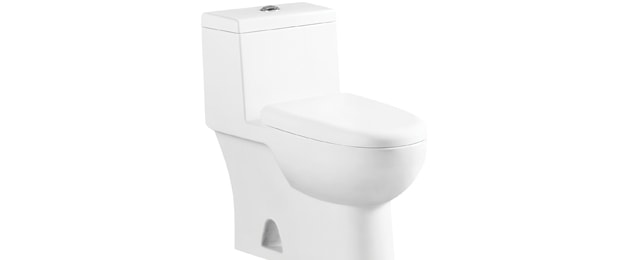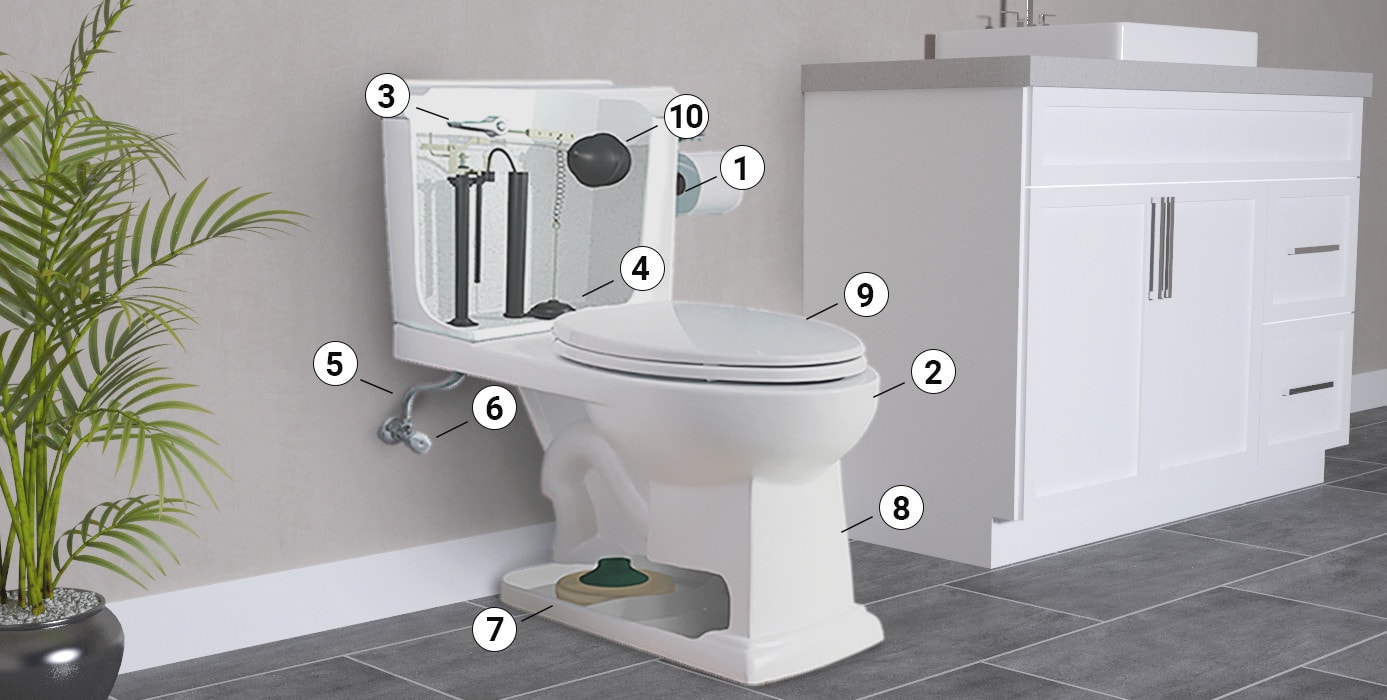Toilet models
The one-piece toilet - has its bowl and tank moulded together as one device, minimizing the risk of leakage and making cleaning easier. It is easier to install than a two-piece toilet and is more urban-looking with its sleek design.
The two-piece - is the most common toilet model, where the bowl and tank are separated. Generally more economical and less expensive than the one-piece model, it suits all budgets. Because it is the most popular model, replacement parts are easier to find.
The wall-mount toilet is installed to a closet carrier support in the wall. The wall carrier holds the tank, and its height is adjustable. A small bathroom equipped with a wall-mount toilet will seem much larger, since it takes up 10” less than a conventional toilet. Because it is enclosed in the wall, it is much quieter. Also, washing the floor and cleaning the toilet bowl is much easier. Ideal for someone with reduced mobility. This model is, on the other hand, more expensive to buy and install.
 One-Piece toilet
One-Piece toilet Two-Piece toilet
Two-Piece toilet
















